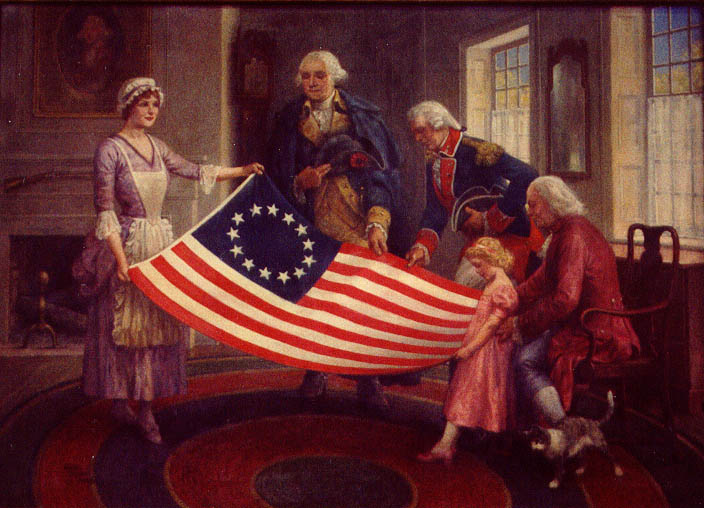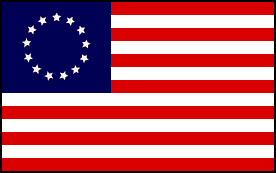This is my small contribution to the celebration.
Using my Super Human Google Fu in searching for info on Flag Day I found this history of the American Flag: The Fourth of July was traditionally celebrated as America's birthday, but the idea of an annual day specifically celebrating the Flag is believed to have first originated in 1885. BJ Cigrand, a schoolteacher, arranged for the pupils in the Fredonia, Wisconsin Public School, District 6, to observe June 14 (the 108th anniversary of the official adoption of The Stars and Stripes) as 'Flag Birthday'. In numerous magazines and newspaper articles and public addresses over the following years, Cigrand continued to enthusiastically advocate the observance of June 14 as 'Flag Birthday', or 'Flag Day'.
You can read more at USFlag.org.
The Flag Throughout the Years
From USFlag.org: On June 14, 1777, in order to establish an official flag for the new nation, the Continental Congress passed the first Flag Act: "Resolved, That the flag of the United States be made of thirteen stripes, alternate red and white; that the union be thirteen stars, white in a blue field, representing a new Constellation."
A Forgotten Verse
As a school child in the 1960s, this was something we often recited in class.
The American's Creed
"I believe in the United States of America as a Government of the people by the people, for the people, whose just powers are derived from the consent of the governed; a democracy in a Republic; a sovereign Nation of many sovereign States; a perfect Union, one and inseparable; established upon those principls of freedom, equality, justice, and humanity for which American patriots sacrificed their lives and fortunes.
I therefore believe it is my duty to my Country to love it; to support its Constitution; to obey its laws; to respect its flag, and to defend it againest all enemies."
Where Did "Old Glory" Come From?
Funny you should ask... This famous name was coined by Captain William Driver, a shipmaster of Salem, Massachusetts, in 1831. As he was leaving on one of his many voyages aboard the brig CHARLES DOGGETT - and this one would climax with the rescue of the mutineers of the BOUNTY - some friends presented him with a beautiful flag of twenty four stars. As the banner opened to the ocean breeze for the first time, he exclaimed "Old Glory!"
This cool story continues....
Our National Anthem
We pick up in mid-story, Waiting in the predawn darkness, Key waited for the sight that would end his anxiety; the joyous sight of Gen. Armisteads great flag blowing in the breeze. When at last daylight came, the flag was still there!
Being an amatuer poet and having been so uniquely inspired, Key began to write on the back of a letter he had in his pocket. Sailing back to Baltimore he composed more lines and in his lodgings at the Indian Queen Hotel he finished the poem. Judge J. H. Nicholson, his brother-in-law, took it to a printer and copies were circulated around Baltimore under the title "Defence of Fort M'Henry". Two of these copies survive. It was printed in a newspaper for the first time in the Baltimore Patriot on September 20th,1814, then in papers as far away as Georgia and New Hampshire. To the verses was added a note "Tune: Anacreon in Heaven." In October a Baltimore actor sang Key's new song in a public performance and called it "The Star-Spangled Banner".
Don't remember the story of Francis Scott Key and what would become our National Anthem? Take a moment to refresh your memory.
I Pledge Allegiance to the Flag...
God bless the United States of America.



No comments:
Post a Comment